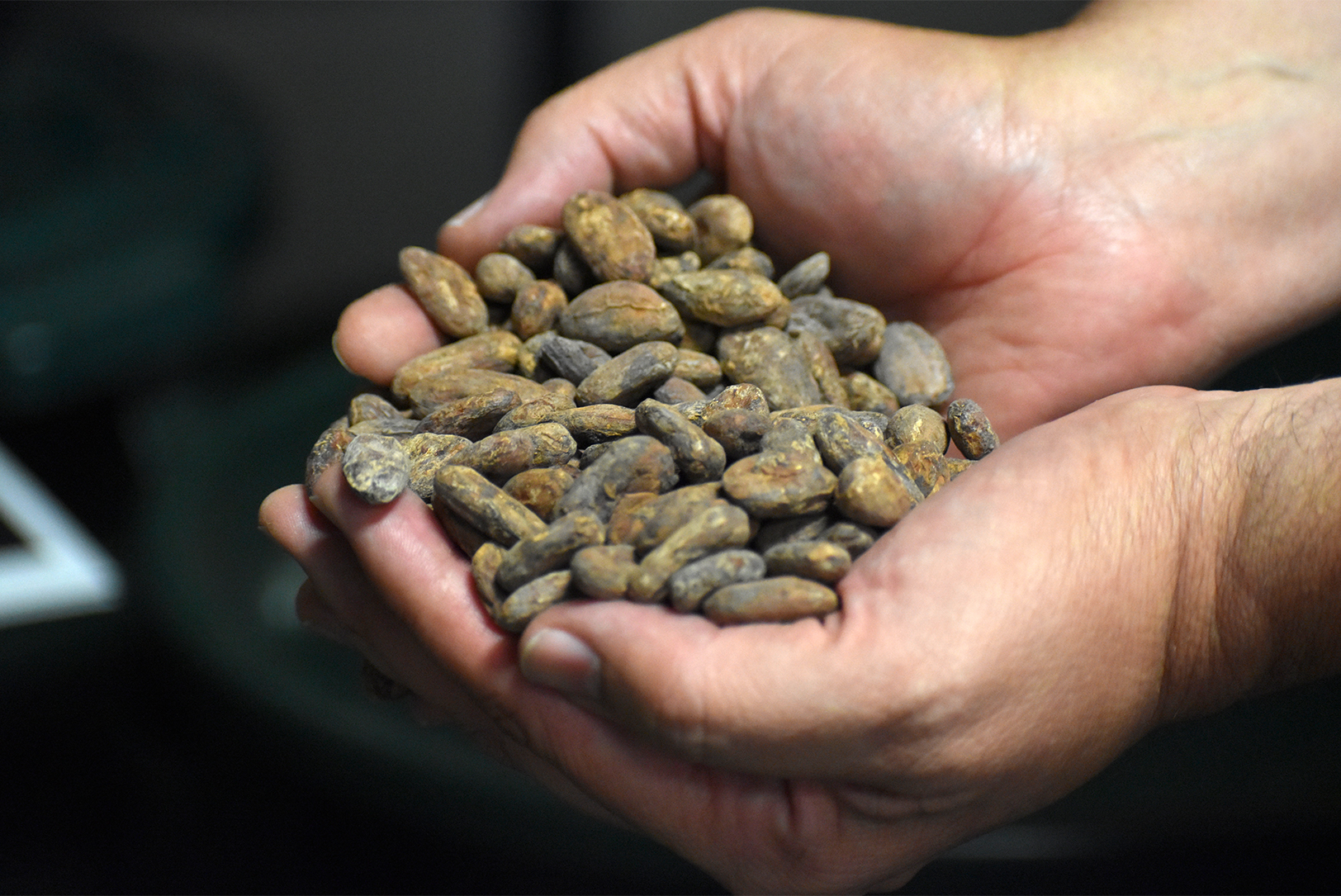Have you ever wondered why some coffees taste like rich chocolate? Discover how is coffee roasted to create chocolate flavors and unlock that indulgent taste.
Roasting transforms plain green beans into flavorful gems, unlocking deep, chocolaty notes that delight your taste buds. If you want to understand how your favorite cup gets that smooth, chocolate flavor, keep reading. You’ll discover the simple roasting steps that make all the difference—and how you can spot these flavors in your next brew.
Coffee Roasting Basics
Coffee roasting is the key step that turns green coffee beans into the rich, flavorful beans we know. It shapes the taste, aroma, and color of the coffee. The roasting method controls the final flavor, including the chocolate notes many love.
Understanding the basics of roasting helps appreciate how chocolate flavors develop. It is a careful balance of heat and time. Each stage of roasting affects the beans in a unique way.
Roasting Process Stages
The roasting starts with green beans that have a grassy smell. Heat is slowly applied, causing the beans to dry. This is called the drying phase. Then the beans start to turn yellow and emit a toasted smell.
Next comes the Maillard reaction, where sugars and amino acids react. This creates browning and many new flavors. The beans darken and begin to smell sweet and nutty. The chocolate flavor starts to form here.
The final stage is the development or roasting phase. The beans crack as they expand. This is called the first crack. Roasting further darkens the beans and deepens the flavor. Dark roasts highlight chocolate and caramel notes.
Impact On Coffee Beans
Roasting changes the beans’ color from green to dark brown. It also reduces moisture and increases volume. The heat breaks down complex compounds inside the bean.
These changes create the aroma and taste we enjoy. Light roasts keep fruity and acidic flavors. Medium roasts balance acidity and sweetness. Dark roasts bring out bitter and chocolatey notes.
Chocolate flavor in coffee comes from roasting sugars and other compounds. The longer and hotter the roast, the stronger the chocolate taste. Roasting controls how these flavors develop and come forward in the cup.

Credit: www.startlandnews.com
Flavor Development In Roasting
Flavor development in roasting is the key to turning green coffee beans into a rich, delicious brew. Roasting changes the beans’ chemistry, creating new tastes and aromas. The process involves heat that triggers complex reactions inside the beans. These reactions build the chocolate notes many coffee lovers enjoy.
Maillard Reaction Role
The Maillard reaction happens when heat causes sugars and amino acids in the beans to combine. This reaction forms brown pigments and complex flavors. It creates nutty, toasty, and chocolate-like tastes. The Maillard reaction is slower at low heat and speeds up as temperature rises. It shapes the rich, deep flavors found in roasted coffee.
Caramelization Effects
Caramelization occurs when sugars in the coffee bean melt and break down under high heat. This process adds sweetness and body to the flavor. Caramelization produces hints of caramel, toffee, and chocolate. It also darkens the bean’s color. The longer the roast, the stronger the caramel notes become, enhancing the chocolate flavor in coffee.
Creating Chocolate Notes
Chocolate flavors in coffee come from careful roasting and bean choice. The process brings out natural sugars and oils inside coffee beans. These elements mix to create smooth, rich chocolate tastes. Roasting plays a key role in developing these flavors.
Understanding how to create chocolate notes helps coffee lovers enjoy deeper taste. It starts with picking the right beans and applying the right heat. Each step shapes the final flavor in your cup.
Bean Selection Importance
Not all coffee beans have chocolate potential. Beans from certain regions often have natural chocolate hints. Beans grown at high altitudes develop more complex flavors. Arabica beans are known for smooth, sweet notes. Choosing beans with natural sweetness helps create chocolate flavors during roasting.
Fresh beans with proper moisture levels roast better and taste richer. Beans must be clean and free from defects. This ensures pure and balanced chocolate notes after roasting.
Optimal Roasting Profiles
Roasting changes the chemical structure inside coffee beans. This process creates the flavor and aroma. For chocolate notes, medium to medium-dark roasts work best. These roasts bring out caramelized sugars and natural oils.
Roasters carefully control time and temperature. Too light roasting keeps beans acidic and fruity. Too dark can burn flavors and mask chocolate notes. The right balance reveals smooth, deep chocolate tones.
Slow roasting at steady heat helps develop richer flavors. Cooling the beans quickly after roasting preserves these delicate notes. Perfect roasting highlights chocolate without bitterness or sourness.
Techniques For Enhancing Chocolate Flavors
Enhancing chocolate flavors in coffee requires careful roasting techniques. Roasters adjust the process to bring out rich, deep chocolate notes. Small changes in roasting can make a big taste difference.
Understanding how roast level and cooling affect flavor helps create the perfect chocolate taste. These steps control the balance between bitterness, sweetness, and aroma.
Roast Level Choices
The roast level greatly impacts chocolate flavors. Medium to medium-dark roasts often reveal the best chocolate notes. These roasts keep the coffee’s natural sugars intact. Light roasts may taste too acidic and miss rich chocolate tones. Dark roasts can become bitter and lose subtle sweetness. Roasters watch the bean color and crack sounds. These signs help decide the right moment to stop roasting. This careful timing preserves the desired chocolate flavor.
Cooling And Resting Methods
Cooling coffee quickly stops the roasting process. This preserves the chocolate notes developed during roasting. Air cooling or water quenching are common methods. Air cooling is gentle and keeps flavors clean. Water quenching cools faster but can change the taste. After cooling, resting the beans is important. Resting lets gases escape and flavors settle. This step smooths the coffee and enhances chocolate richness. Most roasters wait at least 12 to 24 hours before grinding.
Common Challenges And Solutions
Roasting coffee to bring out chocolate flavors involves several challenges. These challenges can affect the taste and aroma of the final cup. Understanding common problems and their solutions helps create a balanced, rich coffee.
Avoiding Bitter Tones
Bitter tones often appear when coffee beans roast too long or at too high a temperature. Over-roasting burns sugars in the beans, causing bitterness. Roasters must watch the color and smell closely during the process.
Lowering the temperature or shortening the roast time can reduce bitterness. Using even heat helps the beans roast uniformly. Cooling the beans quickly after roasting stops the cooking process and preserves flavor.
Balancing Acidity And Sweetness
Acidity gives coffee brightness, while sweetness adds smoothness. Too much acidity makes the coffee sharp, too little makes it dull. The goal is to find a middle ground that highlights chocolate notes.
Adjusting the roast level controls acidity and sweetness. Medium roasts often balance these well. Roasters also select beans with natural sweetness and mild acidity to enhance chocolate flavors.

Credit: www.coracaoconfections.com
Tasting And Identifying Chocolate Flavors
Tasting coffee to find chocolate flavors is a fun and rewarding skill. It helps you enjoy your coffee more deeply. These flavors come from the way coffee beans are roasted. The roasting process brings out rich, sweet notes like those in chocolate. Learning to spot these notes improves your coffee experience.
Chocolate flavors in coffee range from light and sweet to dark and bitter. They add warmth and smoothness to the cup. Each coffee has unique chocolate hints depending on its origin and roast. Tasting carefully can reveal these subtle flavors. It takes practice, but anyone can learn.
Flavor Notes To Detect
Start by smelling the coffee. Look for aromas like cocoa, dark chocolate, or milk chocolate. Take a small sip and let the coffee sit on your tongue. Notice if it tastes sweet, bitter, creamy, or smooth. Some coffees have hints of caramel or nuts alongside chocolate. Try to remember these tastes for future cups.
Pairing Tips
Pair coffee with foods that bring out chocolate flavors. Dark chocolate or mild cheeses work well. Nuts and berries also complement these notes. Avoid very sweet or spicy foods. They can hide the chocolate taste in coffee. Experiment with small bites to see what you enjoy most.

Credit: chocolatealchemy.com
Frequently Asked Questions
How Does Roasting Create Chocolate Flavors In Coffee?
Roasting triggers chemical reactions that develop coffee’s flavor. Maillard reaction and caramelization produce rich, sweet chocolate notes. The roasting temperature and duration influence the depth of these flavors.
What Roasting Level Brings Out Chocolate Notes Best?
Medium to medium-dark roasts usually highlight chocolate flavors best. These roasts balance acidity and bitterness, enhancing sweet and nutty chocolate undertones without burning the beans.
Why Do Some Coffee Beans Taste More Chocolaty?
Bean origin and variety affect chocolate flavor intensity. Beans from regions like Latin America often have natural chocolatey profiles enhanced by proper roasting techniques.
Can Roasting Time Affect Coffee’s Chocolate Flavor?
Yes, roasting time impacts flavor development. Longer roasting deepens chocolate and caramel notes but may reduce acidity. Precise timing is key to achieving desired chocolate richness.
Conclusion
Roasting coffee brings out unique flavors inside the beans. The heat changes sugars and oils, creating chocolate notes. Darker roasts usually have stronger chocolate tastes. Every step matters, from bean choice to roasting time. This process turns simple coffee into a rich, tasty drink.
Next time you sip coffee, think about this careful craft. It’s what makes your cup special and full of flavor. Understanding roasting helps you appreciate coffee even more.







